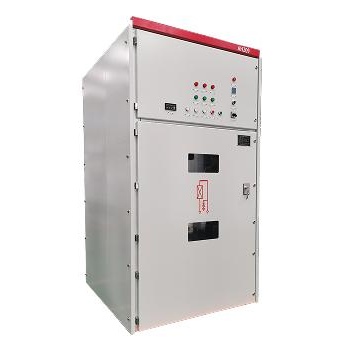
- הקדמה
מגבל זרם תקלה (FCL) הוא מכשיר הגנה קריטי במערכות חשמל מודרניות. הוא מתוכנן להגביל במהירות את זרמי התקלות במהלך כשלים במערכת כגון קצרים, ובכך להגן על ציוד מפתח ברשת מנזק ולשפר את יציבות הפעולה של המערכת. עם זאת, במהלך הפעלה אמיתית, המגבל עצמו עשוי גם לתקל בשל סיבות שונות. כדי להבטיח את האמינות שלו, יש לפתח אסטרטגיות מניעה ותחזוקה מערכתיות עבור סוגי התקלות הנפוצים. מסמך זה נועד להציע פתרונות מקיפים למגבלי זרם תקלה מארבעה זוויות מבט עיקריות: עודף זרם, חימום יתר, הזדקנות מבודד ותקלות מכניות.
2. ניתוח בעיות והצעות לפתרון
זוית 1: פתרונות לתקלות של עודף זרם
תקלות של עודף זרם בדרך כלל נגרמות עקב קצר פתאומי ברשת או עלייה חדה בצריכת החשמל. זרמים גבוהים באופן מיידי יכולים לעקוף את יכולת ההישרדות המתוכנת של מגבל הזרם, מה שגורם להיזקק לצורכי אלקטרוניקה כוח (לדוגמה, IGBT), מפסקים מהירים או יחידות על-מוליכות.
פתרונות:
- מערכת רישוי בזמן אמת ואזהרה מוקדמת: התקן חיישני זרם בעוצמה גבוהה ומכשירי מעקב כדי לעקוב באופן מתמיד אחרי זרמי הקו. יוצר אות אזהרה מוקדם כאשר הזרם מתקרב אך עדיין לא עבר את סף הבטיחות, מה שמספק זמן התערבות לטכנאים.
- תאורה מרובת רמות: הקים מערכת הגנה מרובת רמות. stellen Sie sicher, dass die Nennwerte der vorgelagerten Schaltkreise oder Sicherungen mit der Standfestigkeit des Strombegrenzers übereinstimmen. Bei Überstromereignissen sollten sich die Ersatzschutzeinrichtungen vor oder in Koordination mit dem Strombegrenzer einstellen, um den Stromkreis schnell zu unterbrechen.
- kalibrierung und Einstellungsprüfung auf regelmäßige Basis: Mit Veränderungen in den Netzstrukturen und steigenden Lasten sollten regelmäßig die Betriebsstrom-Einstellungen des Strombegrenzers überprüft werden, um sicherzustellen, dass sie den aktuellen Netzzuständen entsprechen und Fehlfunktionen oder fehlgeschlagene Aktionen verhindern.
Perspective 2: Solutions for Overheating Faults
Problem Analysis: Overheating is a primary cause of reduced lifespan and sudden failures in electronic equipment. For fault current limiters, prolonged high-load operation, poor heat dissipation, or high ambient temperatures can lead to accumulated heat in internal components, resulting in performance degradation or even burnout.
Solutions:
- Enhanced Temperature Monitoring: Deploy temperature sensors at key heat-generating points within the current limiter (e.g., reactors, power resistors, power semiconductors) to enable real-time temperature display and over-temperature alarms.
- Active Cooling System Design: Optimize heat dissipation structures by adopting active cooling solutions such as forced air or liquid cooling. Ensure adequate installation spacing, clear surroundings, and unobstructed ventilation. Regularly clean dust from fans and heat sinks to maintain cooling efficiency.
- Use of High-Temperature Resistant Components: During device selection or replacement, prioritize components with high junction temperatures and excellent thermal stability to enhance the overall heat resistance of the equipment.
Perspective 3: Solutions for Insulation Aging Faults
Problem Analysis: Insulation materials gradually degrade under long-term exposure to electric fields, thermal stress, and environmental factors (e.g., humidity, dust, chemical contamination). This leads to reduced insulation strength, increased leakage currents, partial discharges, or even breakdown short circuits.
Solutions:
- Preventive Testing and Periodic Replacement: Strictly implement preventive testing plans. Regularly measure insulation resistance and dielectric loss factors using tools such as megohmmeters and dissipation factor testers to assess insulation health. Develop periodic replacement schedules for insulation components based on manufacturer recommendations and operating environments.
- Enhanced Environmental Adaptability Design: For current limiters operating in humid or heavily polluted environments, select models with moisture-proof, anti-condensation, and anti-pollution flashover features. Use sealed structures, insulating gas injection, or special insulation materials (e.g., silicone rubber) to improve protection levels.
- Condition-Based Maintenance and Cleaning: Incorporate insulation inspections into routine maintenance procedures. Use infrared thermal imaging to detect localized hot spots. Perform regular power-off cleaning to remove contaminants from insulation surfaces, keeping them clean and dry.
Perspective 4: Solutions for Mechanical Faults
Problem Analysis: Mechanical faults primarily occur in current limiters equipped with mechanical components such as fast vacuum switches or repulsion mechanisms. Common issues include mechanism jamming, spring fatigue, contact wear, and poor contact, which can prevent the current limiter from operating reliably within milliseconds.
Solutions:
- Systematic Mechanical Maintenance: Establish a regular mechanical maintenance regimen. This includes cleaning operating mechanisms, replenishing or replacing lubricants, checking for loose fasteners, measuring contact wear and overtravel, and ensuring mechanical flexibility and reliability.
- Selection of High-Reliability Products: During procurement, prioritize brands and products with mature designs, extensive practical validation, and long mechanical lifespans.
- Improved Operating Environment: Avoid installing equipment in extreme environments with strong vibrations, significant temperature fluctuations, or corrosive gases. If unavoidable, implement auxiliary measures such as vibration damping, temperature control, and sealing.
3. Comprehensive Implementation Recommendations
- Establish a Full Lifecycle Management System: Implement full lifecycle management for fault current limiters, from device selection, installation, and commissioning to operation, maintenance, and decommissioning. Maintain detailed health records.
- Train Professional Maintenance Teams: Provide specialized training for maintenance personnel to ensure they master the inspection, maintenance, and fault-handling skills outlined in this document.
- Spare Parts Management: Stock critical components and wear-prone parts to enable timely replacements during failures and minimize downtime.
4. Conclusion
The stable operation of fault current limiters is crucial for grid security. By implementing the comprehensive solutions addressing overcurrent, overheating, insulation aging, and mechanical faults outlined above, and establishing a management system focused on "prevention first, maintenance second," the operational reliability and service life of fault current limiters can be significantly enhanced. This will minimize the risk of unexpected downtime and provide a solid foundation for the safe, stable, and efficient operation of the power system.






















